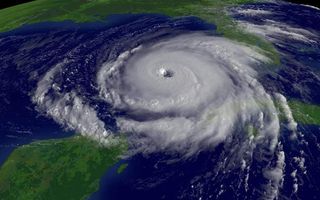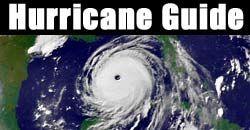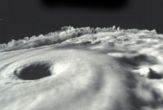Forecasters: 'Very Active' 2007 Hurricane Season

The Atlantic basin will likely see a very active hurricane season this year, though not as active as in 2004 and 2005, according to a well-known Colorado State University forecasting team.
“The activity of these two years was unusual, but within the natural bounds of hurricane variation,” said hurricane forecasting guru William Gray, who issued his first seasonal forecast 24 years ago.
The latest forecast upgrades the team’s earlier predictions for the 2007 hurricane season. The team now expects 17 named storms to form in the Atlantic, with nine of those storms becoming hurricanes. Five of the hurricanes are expected to develop into major storms (Categories 3, 4, and 5 on the Saffir-Simpson scale) with wind speeds of 111 mph or greater.
The earlier 2007 forecast estimated 14 named storms and 3 hurricanes.
2006: Forecast flop
Forecasts for 2006, by Gray's team and another by government meteorologists, also predicted an active hurricane season, but only 10 named storms developed and only 5 of those became hurricanes. By all accounts, the forecasts were wrong. Meteorologists said later on that a strong El Niño event weakened storm activity. The energy from El Niño starts with a huge, warmer-than-normal "bathtub" of seawater that races from west to east in the Pacific and across the continent and eventually results in atmospheric energy that shears the tops off Atlantic storms before they can really intensify.
But forecasters now say that El Niño shouldn’t be a factor this year, so hurricane activity will be enhanced.
Sign up for the Live Science daily newsletter now
Get the world’s most fascinating discoveries delivered straight to your inbox.
“We’ve seen El Niño conditions dissipate quite rapidly late this winter,” said forecast team leader Phil Klotzbach. “So we do not think that’s going to be an inhibiting factor this year.”
The team’s predictions are based on global oceanic and atmospheric conditions, such as El Niño, sea surface temperatures and sea level pressures. The forecasters examine past trends in these factors that preceded active or inactive hurricane seasons to look for trends.
Increasing intensity
Some climate scientists have concluded that more intense hurricanes have resulted from human-induced global warming. Gray disagrees.
“Although global surface temperatures have increased over the last century and over the last 30 years, there is no reliable data available to indicate increased hurricane frequency or intensity in any of the globe’s seven tropical basins, except for the Atlantic over the past 12 years,” Gray said.
Still, Gray expects the recent upturn in intense hurricanes to continue for several years as part of a natural cycle that typically lasts a couple decades.
“We’ve had an upturn of major storms since 1995,” Gray said. “We think this upturn of major storms will continue for another 15 or 20 years."
The team will issue further forecast updates at the end of May and the beginning of August, September and October.
Hurricane season in the Atlantic basin, which includes the Caribbean and the Gulf of Mexico, begins every year on June 1 and officially ends Nov. 30.

Hurricane Names, Number & Forecasts
Deadliest, costliest, busiest months, worst states, plus this year's storm names and more.
The science of monster storms.

Image Gallery

Andrea Thompson is an associate editor at Scientific American, where she covers sustainability, energy and the environment. Prior to that, she was a senior writer covering climate science at Climate Central and a reporter and editor at Live Science, where she primarily covered Earth science and the environment. She holds a graduate degree in science health and environmental reporting from New York University, as well as a bachelor of science and and masters of science in atmospheric chemistry from the Georgia Institute of Technology.
Most Popular


